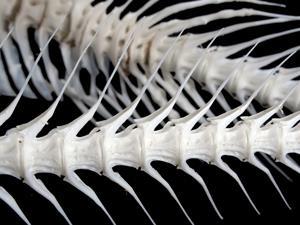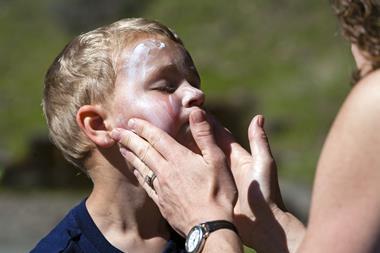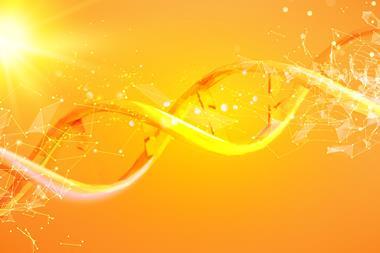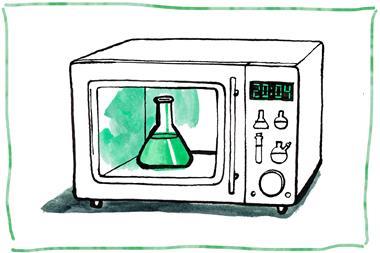Slip-slap-slop with biocompatible material derived from waste cod bones

An effective new sunscreen based on iron-doped hydroxyapatite (HAp)-based materials derived from cod fish bones, a by-product of the food industry, has been developed by scientists in Portugal.
Commercial sunscreens are usually based on materials like TiO2 and ZnO, which absorb UV to reduce its harmful effects on the skin. However, there are concerns regarding the potential toxicity of these materials and their adverse environmental effects when they accumulate in water supplies.
Clara Piccirillo from the Portuguese Catholic University in Porto and colleagues prepared their new sunscreen by treating cod bones with FeCl2 solution for three hours at 65–70 °C. The bones were then dried overnight and calcined at 700 °C for one hour, yielding multiphasic materials containing HAp, iron-substituted HAp and a small amount of hematite that absorbs UV radiation.
Iron is key to the materials’ performance, says Piccirillo. ‘Iron oxide was already reported as a UV absorber; in our material, the presence of calcium iron hydrogen phosphate (Ca9FeH(PO4)7) increases the absorption and extends it over the whole UV range. It is the introduction of the iron into the hydroxyapatite structure that makes it a UV absorber, as unsubstituted calcium phosphate is not.’

The materials were made into creams that showed good photostability and a UVA-to-UVB ratio greater than 0.90, which means that they offer comparable protection against both UVA and UVB radiation. Using the star classification system developed by Boots – one of the UK’s main sunscreen producers and retailers – these creams would be awarded five stars, the highest possible rating.
20 human volunteers had a small quantity of the cream applied to an area of their skin for 48 hours and showed no adverse allergic irritation. This result was expected as none of the components of the material are toxic, and HAp is a biocompatible material that is present in large quantities in our bones.
Although the materials absorb UV light over a wide range, the level of the absorption is not very high, says Piccirillo. ‘For this reason we want to continue studying the system and improve it, to have a higher absorption, which would correspond to a higher Sun Protection Factor (SPF).’
Daily sun exposure is responsible for photoaging, and sunburn is one of the main risk factors for skin cancer, which is increasing worldwide, according to Osvaldo Correia, general secretary for the Portuguese Association of Skin Cancer. ‘Piccirillo presents a promising and very useful active sunscreen filter,’ he says. ‘Mineral filters are less allergenic than traditional ones and are the best choice for children or people with sensitive skin.’
References
This paper is free to access until 26 August 2014. Download it here:
C Piccirillo et al, J. Mater. Chem. B, 2014, DOI: 10.1039/c4tb00984c












No comments yet